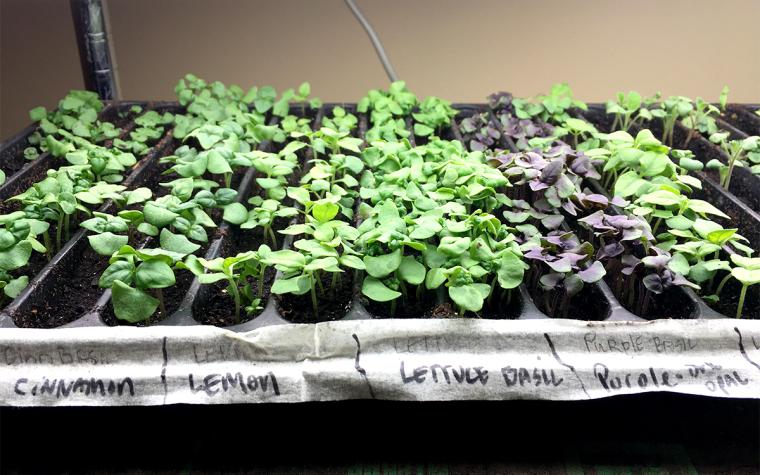JACKSON, Mo. – Get a jump on the gardening season by starting vegetable and flower seeds indoors now, says University of Missouri Extension field horticulturist Donna Aufdenberg.
“Starting seeds indoors doesn’t have to be difficult,” she says. “Knowing the basics is the best way to start.”
Sow most garden seeds 6-8 weeks before transplanting, says Aufdenberg. Set a goal date to plant outdoors and then count back on the calendar the number of weeks (or days) it will take for the plants to be ready to transplant, she says. Add the appropriate number of days for seed germination. This information is usually found on the seed packet.
Use new containers or reuse containers soaked for 10 minutes in 10% bleach water. Choose containers that are at least 2 inches deep and have drainage holes. Paper pots, plastic pots, cell packs or open flats can also be used. If you use open flats, plant in rows rather than broadcasting.
Select a high-quality medium such as potting mix or seed starting mix that contains peat and/or vermiculite. Do not use mixes that include fertilizer, and avoid potting and garden soils. “Buying inexpensive, poor-quality soils only causes problems,” says Aufdenberg.
Check seed packets for variety and information such as planting depth and light requirements.
After sowing seeds, keep the medium moist but not wet. Don’t let the soil dry completely. If you cover the seeds with a plastic dome, remove it when seedlings start to emerge to prevent disease.
Use heating mats under trays to speed germination of warm-season crops. Cool-season crops do not need heating mats.
Good lighting encourages quicker germination and keeps seedlings from becoming long and lanky, says Aufdenberg. Fluorescent shop lights are a good choice for seed starting. Place lights directly over seedlings, no more than 1-2 inches away from leaf tops. Do not allow bulbs to touch the foliage because burning can occur.
Check seedlings daily, or twice a day if they dry quickly. Water from the bottom and do not let the seedling sit in standing water. If you water from the top, water gently.
Keep seedlings in a well-ventilated, cool area (under 70 degrees during the day and 60 degrees at night). Good air circulation makes sturdier stems and stronger plants. Pay close attention to light levels and watering practices if seedlings get tall and lanky and have weak stems. Too little light and too much heat and water cause lankiness.
To transplant seedlings to a larger container, watch for the sprouting of the first “true leaves,” which look like adult leaves. Use a pencil or narrow tool to lift seedlings from the container. Plant each seedling in its own small pot filled with growing medium. Apply a diluted fertilizer solution after true leaves appear.
Plants grown indoors must “harden off” before being transplanted into the garden. If not gradually acclimated to outdoor conditions, plants can suffer wind or sun burn or chill. Place them in a cool, protected location outdoors for about 3-5 days to acclimate. Then move them into filtered sun/shade for another couple of days before planting outdoors. Plant on a cloudy day or late in the afternoon to avoid the strong sun and transplant shock. Water after planting.
For more information, see the MU Extension publication “Starting Plants Indoors From Seeds” or Aufdenberg’s IPM Town Hall video on seed starting.
Photo
Plants grown indoors from seeds.
Get a head start on the gardening season by planting vegetable and flower seeds indoors. Photo by University of Missouri Extension field horticulturist Donna Aufdenberg.
